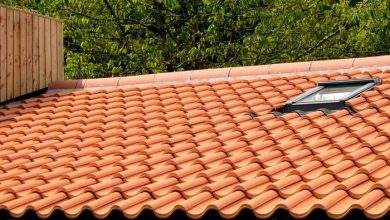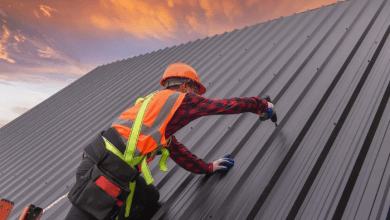
Your home is one of your biggest investments. But more than that, it’s where you live, relax, and make memories. To keep everything running smoothly and to avoid costly repairs down the line, a little routine maintenance goes a long way. Many homeowners wait until something breaks to call an expert, but a Electrical System and Lighting is here to fix problems fast.
Taking the time once a year to go through a few essential checks can keep your home safe, efficient, and looking its best. These ten yearly inspections don’t take much effort, but they do make a big difference.
- Roof and Gutters
Your roof takes a beating all year long. From heavy rains to strong winds, it protects everything beneath it. That’s why a yearly inspection is one of the most important things you can do.
Look up and scan for missing or cracked shingles, sagging areas, or any signs of wear. Use binoculars if needed. If you’re comfortable on a ladder, you can take a closer look.
Gutters and downspouts also serve a vital role. When clogged with leaves, dirt, or debris, they can cause water to back up and spill over. That water may end up near your foundation, causing major structural issues over time. Clean your gutters at least once a year—twice if you have trees nearby—and make sure water flows away from your home.
- Electrical System and Lighting
Flickering lights might seem like a small annoyance, but they can point to a deeper problem. Loose wiring, overloaded circuits, or failing fixtures often hide behind those little flashes. So, if you notice lights dimming when you use an appliance or if switches feel warm to the touch, don’t ignore it.
Scheduling annual home electrical inspections by a licensed electrician is a wise move. These checks can uncover aging wires, faulty breakers, or potential fire hazards before they become real dangers. The cost of a routine check is far less than the price of damage from an electrical fire. Even if your home is newer, wear and tear still happen. Regular inspections keep your system up to code and help ensure everything runs safely and efficiently.
- HVAC System
Your heating and cooling system keeps your home comfortable through every season. To make sure it performs at its best, give it some attention once a year. Replacing the air filters is an easy step. Dirty filters strain the system and reduce airflow, which can increase energy costs and shorten the life of the unit.
It’s also a good idea to schedule a professional tune-up. HVAC technicians can check for refrigerant leaks, clean internal components, and make adjustments to improve performance. Listen for unusual sounds, feel for uneven airflow, and check the thermostat to make sure it’s responding properly.
- Plumbing and Water Systems
Water damage is one of the most expensive repairs a homeowner can face, but a quick annual check can help avoid it. Look under sinks, around toilets, and near water heaters for any signs of leaks or moisture. Even a slow drip can waste gallons of water and weaken wood over time.
Run every faucet and flush each toilet to spot any issues. Slow drains may be a sign of a clog forming in your pipes. It’s also worth testing your home’s water pressure. Too much pressure can put stress on your plumbing and increase the chance of a burst pipe. If you have a water heater, flushing it once a year removes sediment and keeps it running efficiently.
- Exterior Paint and Siding
The outside of your house protects everything inside. Faded or chipped paint isn’t just cosmetic—it can expose wood to moisture, pests, and rot. Walk around your house and take note of any peeling areas, soft spots, or signs of mold. Wooden trim and siding often show the earliest signs of trouble. Touching up these problem areas early keeps repairs small.
- Foundation and Basement
The foundation is what everything else rests on, so it’s critical to keep it in good shape. Once a year, take a careful look at your basement walls and floors for cracks or signs of shifting. Not every crack is serious, but if you see anything widening or running diagonally, it’s worth noting and possibly getting evaluated by a professional.
Also, check for moisture. Damp spots, musty smells, or visible mold are clear warning signs. These issues can damage your home’s structure and lead to poor air quality.
- Smoke and Carbon Monoxide Detectors
These small devices are easy to forget, but they play a major role in keeping your family safe. Once a year, test every smoke and carbon monoxide detector in your home. Press the test button to confirm they’re working. While you’re at it, replace the batteries—even if the detectors haven’t started beeping.
If your detectors are reaching the end of their life, don’t wait—get new ones.
- Windows and Doors
Windows and doors do more than just let in light and provide access. They also enhance insulation, security, and energy efficiency. Each year, go around your home and inspect them carefully. Feel for drafts around the edges. If you notice air leaks, reapply caulk or replace the weatherstripping.
Cracked glass, torn screens, or damaged locks should be repaired or replaced right away. Windows that stick or doors that don’t close properly could be a sign of shifting in the frame or foundation. Lubricate the hinges and clean the tracks to keep everything operating smoothly.
- Don’t Neglect the Attic
Your attic is out of sight, but it shouldn’t be out of mind. It’s a key area when it comes to controlling your home’s temperature and protecting the roof structure. At least once a year, climb up and take a look around. Check for any signs of water leaks, such as damp insulation or stained wood. These could point to a roof issue that needs attention.
- Safety Equipment and Emergency Kits
Emergencies can happen at any time. You just need to be prepared. Go through your home safety equipment once a year. Are your fire extinguishers still fully charged?
Also, review your emergency supply kit and make sure it’s stocked with fresh water, non-perishable food, flashlights, batteries, and a first aid kit. If you don’t have one yet, take the time to build one. A few simple steps now can help you stay calm and safe during an unexpected event.
A well-cared-for home feels better to live in. It runs more smoothly, stays safer, and gives you fewer surprises. Doing these yearly checks isn’t about wanting a perfect home—it’s about staying ahead of problems and protecting what really matters – your family’s safety. Make it a habit, not a hassle. A little attention once a year can make all the difference.




